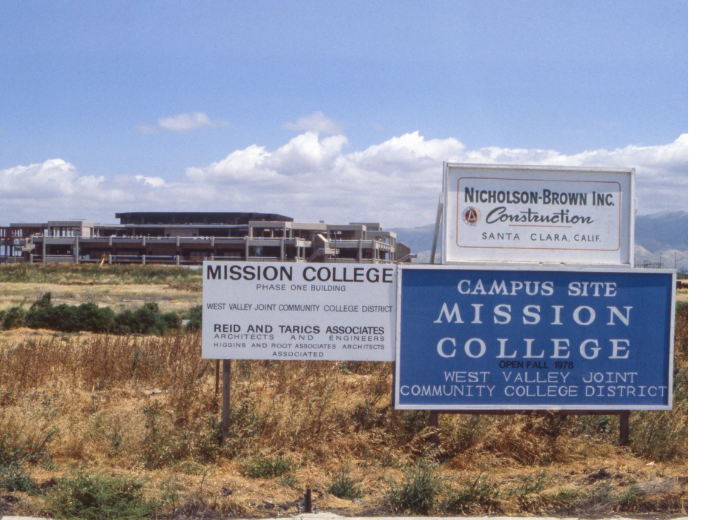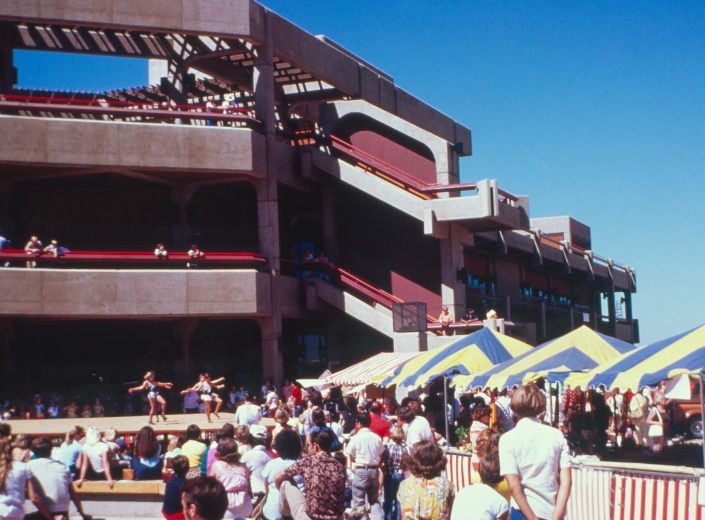Celebrating 50 Years, Mission College Reflects on a History of Impact

FOR IMMEDIATE RELEASE
SANTA CLARA, CA -- In a city known for innovation and transformation, Mission College has quietly and steadily carved out its own legacy as an engine of opportunity, inclusion, and progress. As it celebrates its 50th anniversary, the college reflects not just on institutional milestones, but on the lives it has helped shape and the communities it has served. From its modest beginnings in the mid-1970s, Mission has grown into a vital educational and cultural anchor for Santa Clara County.
The college’s origins can be traced back to 1972, when the West Valley Community College District voted to establish a second campus to meet growing demand. Santa Clara was transitioning from farmland to tech corridor, and the need for accessible education was growing rapidly. A visionary planning committee in 1973 mapped out an ambitious, student-first approach that would shape the college's identity for decades to come.
First Students, First Steps: The Temporary Campus Years
Mission College opened its temporary campus in 1975 at Jefferson Intermediate School. Despite its modest setup - 1,000 students, 32 faculty members, and a borrowed school facility - the college represented something far more significant: access. Education was finally within reach for working-class families, immigrants, and first-generation students in the South Bay.
By 1976, ground was broken on the new 160-acre site that would become Mission’s permanent home. Just two years later, in June 1978, the first commencement was held, and by fall 1979, the permanent campus opened its doors at 3000 Mission College Boulevard.
Building Community, Not Just Classrooms
That first year on the new campus, the college hosted its inaugural “Mission Day Fair” to welcome the public, complete with community races, local music, and a pancake breakfast. But Mission’s mission wasn’t just celebratory - it was foundational. Everything about the college, from student governance to athletics and fashion retail training, was rooted in the idea that education should serve the whole person.
In 1979, the college appointed its first student trustee, launched intercollegiate athletics, and opened “Fit In Image,” a student-run fashion merchandising store. Partnerships with the City of Santa Clara led to the development of athletic fields and recreational facilities - ensuring that Mission was not only a place of learning, but a place of belonging.

Innovation in Action: 1980s to 1990s
The 1980s and 1990s brought rapid expansion and redefinition. The hospitality management program was launched with full culinary facilities and quickly became a regional standout. Mission also became one of the first colleges to partner with Apple, opening a dedicated computer center in 1982 - decades before “tech campuses” were the norm.
The college was quick to adapt to its surroundings. As Vietnamese refugees arrived in the aftermath of the Vietnam War, Mission became a safe haven for language learning, career training, and cultural integration. Programs in ESL, literacy, and workforce retraining were designed not only to educate, but to stabilize.
In the early 1990s, when AMD closed a major semiconductor plant, Mission stepped up with training programs to help displaced workers retool their skills for a changing economy. The college became not just a gateway for young learners, but a lifeline for adults in transition.
Global Education and Civic Engagement
Throughout the 1990s, Mission cemented its reputation as a forward-thinking campus through its Global Studies Program and the establishment of the Office for Global Education. The "Brown Bag Lunch" series brought discussions on human rights, sustainability, world cultures, and political activism into casual community settings.
Speakers like Angela Davis, Helen Caldicott, and global education advocates pushed the campus dialogue far beyond the basics of academic curriculum. These events weren’t just extracurricular - they were integral to Mission’s evolving identity as a college of conscience.
A Campus for the Community
Mission College didn’t just build facilities - it built relationships. From hosting Tet festivals, environmental conferences, and music events, to holding fundraisers for injured youth and supporting civic events, the college made its campus a common ground for the public.
Programs like the Child Development Center and partnerships with local high schools expanded the college's role in the community ecosystem. It became a place where education, culture, and care intersected - serving not only students, but families, businesses, and neighborhoods.
The People’s College: Centering Equity and Access
Even as Silicon Valley became a symbol of wealth and innovation, Mission College stayed rooted in equity. In the 1990s, it developed a formal Student Equity Plan, hosted human rights forums, and expanded support for marginalized students.
The college’s consistent investment in inclusivity was more than policy—it was culture. Whether through women’s rights seminars, cross-cultural education programs, or expanded services for international and undocumented students, Mission made it clear that everyone belonged.
From the Author
As Mission College enters its sixth decade, it does so with the same spirit that defined its earliest days: to meet students where they are and help them go where they dream. Its alumni include artists, nurses, entrepreneurs, and city leaders. Many of them, like alumna and contributor Julie R. Flores, return time and again—sometimes to study, sometimes to teach, always to belong.
“Mission is the place I return to when I need to begin again,” Flores wrote. Her words encapsulate the enduring soul of the college.
In a world of rapid change, Mission College offers something rare: a sense of place, of purpose, and of possibility.
